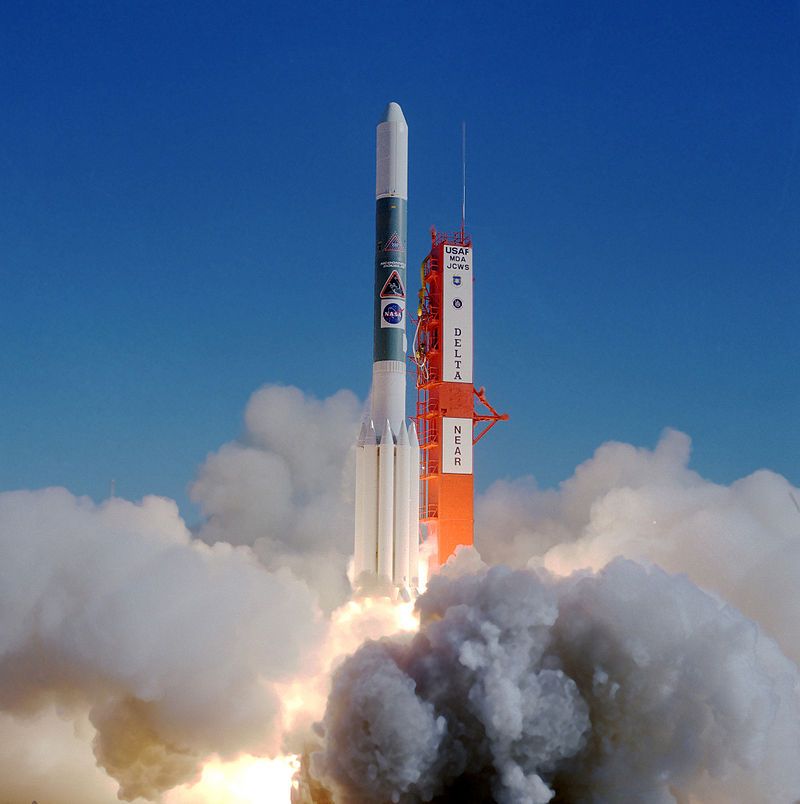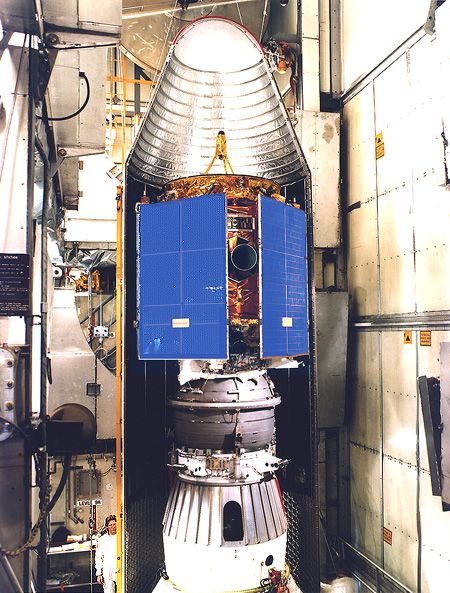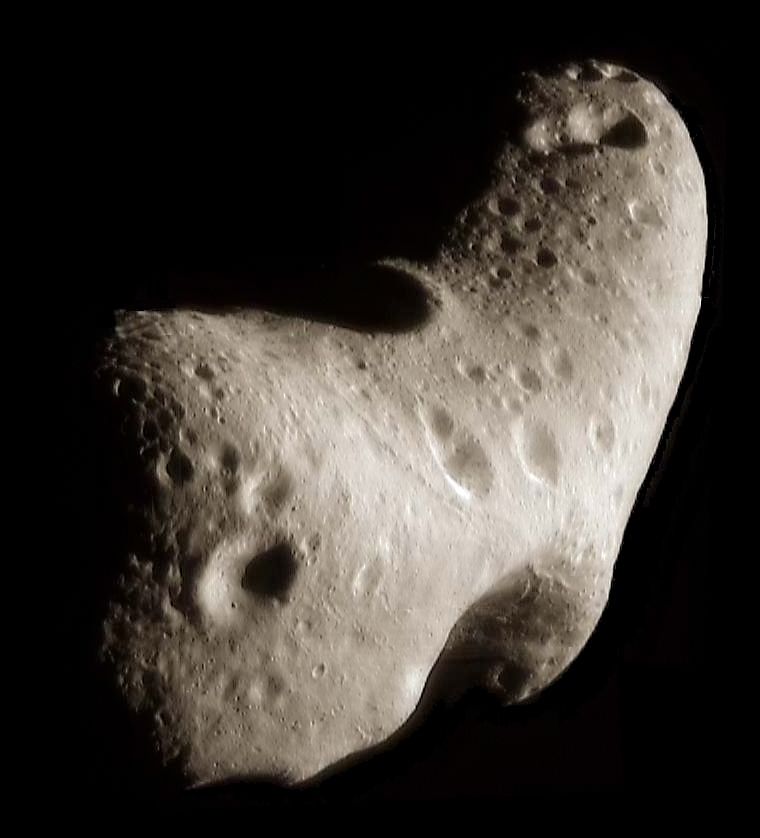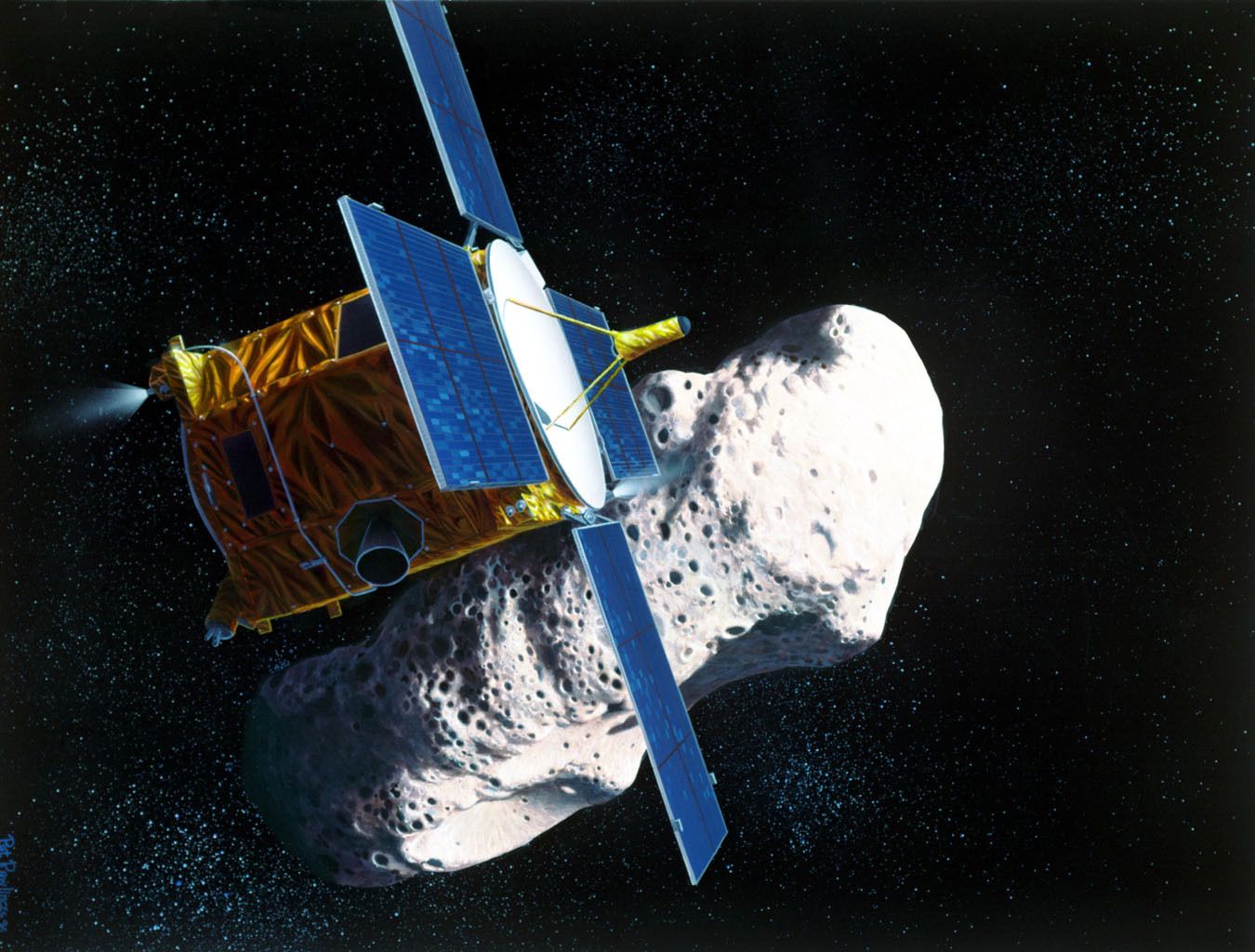
NEAR SHOEMAKER AND EROS

The Near-Earth Asteroid Rendezvous satellite, later re-named NEAR Shoemaker, was a robotic space probe made to study Eros, the near-Earth asteroid, from close orbit over the course of a year by the Johns Hopkins University Applied Physics Laboratory for NASA. The mission succeeded in contacting the asteroid and orbiting it several times, observing it extensively, before ultimately touching down on the asteroid on February 12, 2001. NEAR Shoemaker was the first mission flown under NASA’s Discovery Program, a series of low-cost planetary science projects intended to be competitive that were led by a principal investigator rather than a NASA manager.
The primary goal of NEAR Shoemaker was to rendezvous with 433 Eros, which is an S-class asteroid that is approximately 221 million miles (355 million km) from Earth, and gather data on physical properties, morphology, mineral components, magnetic field, and internal mass distribution. It was the first spacecraft to rely on solar cells for power during operations beyond Mars orbit. Secondary objectives include studies of regolith properties, possible current activity indicated by dust or gas, interactions with the solar wind, and the asteroid spin state. This data helps us understand the characteristics of asteroids in general, the early Solar System’s conditions, and their relationship to meteoroids and comets. The spacecraft was equipped with a near-infrared imaging spectrograph, X-ray/gamma-ray spectrometer, a multi-spectral camera fitted with a CCD imaging detector, a magnetometer, and a laser rangefinder to accomplish these goals.

After several trajectory adjustments, NEAR finally moved into orbit around Eros on February 14, 2000, and became the first human-made object to orbit a minor planet. Through the year 2000, NEAR’s orbit was shifted in stages to accommodate different research programs. However, it did not occur without problems in the months leading up to landing on the asteroid. Controllers had to turn off the near-infrared spectrometer on May 13, 2000, because of an excessive power surge. The spacecraft was in its operational orbit by April 30, 2000, at an altitude of about 31 miles (50 km) from Eros’ center. On July 13, 2000, NEAR entered a lower orbit, nearly 22 miles (35 km), that brought the vehicle to about 12 miles (19 km) from the surface. After about ten days, NEAR moved back to a higher orbit.


NEAR provided vital scientific data from Eros and during its time in space. The spacecraft returned about ten times more data than initially planned, including 160,000 images. NEAR showed us that Eros has no magnetic field, mapped over 70% of the surface using the near-infrared spectrometer, and provided essential data about the asteroid’s interior.
